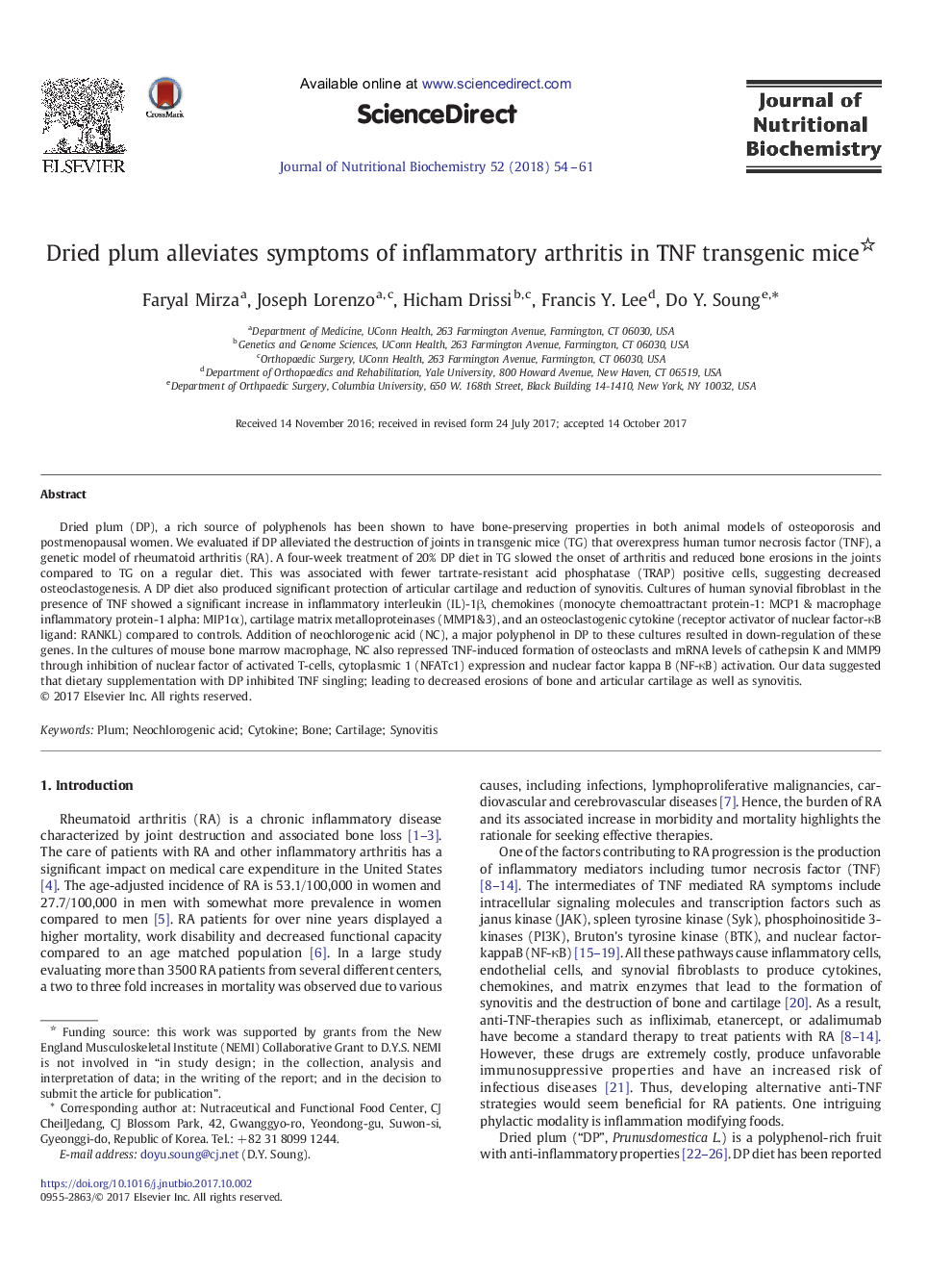| Article ID | Journal | Published Year | Pages | File Type |
|---|---|---|---|---|
| 8336443 | The Journal of Nutritional Biochemistry | 2018 | 8 Pages |
Abstract
Dried plum (DP), a rich source of polyphenols has been shown to have bone-preserving properties in both animal models of osteoporosis and postmenopausal women. We evaluated if DP alleviated the destruction of joints in transgenic mice (TG) that overexpress human tumor necrosis factor (TNF), a genetic model of rheumatoid arthritis (RA). A four-week treatment of 20% DP diet in TG slowed the onset of arthritis and reduced bone erosions in the joints compared to TG on a regular diet. This was associated with fewer tartrate-resistant acid phosphatase (TRAP) positive cells, suggesting decreased osteoclastogenesis. A DP diet also produced significant protection of articular cartilage and reduction of synovitis. Cultures of human synovial fibroblast in the presence of TNF showed a significant increase in inflammatory interleukin (IL)-1β, chemokines (monocyte chemoattractant protein-1: MCP1 & macrophage inflammatory protein-1 alpha: MIP1α), cartilage matrix metalloproteinases (MMP1&3), and an osteoclastogenic cytokine (receptor activator of nuclear factor-κB ligand: RANKL) compared to controls. Addition of neochlorogenic acid (NC), a major polyphenol in DP to these cultures resulted in down-regulation of these genes. In the cultures of mouse bone marrow macrophage, NC also repressed TNF-induced formation of osteoclasts and mRNA levels of cathepsin K and MMP9 through inhibition of nuclear factor of activated T-cells, cytoplasmic 1 (NFATc1) expression and nuclear factor kappa B (NF-κB) activation. Our data suggested that dietary supplementation with DP inhibited TNF singling; leading to decreased erosions of bone and articular cartilage as well as synovitis.
Related Topics
Life Sciences
Biochemistry, Genetics and Molecular Biology
Biochemistry
Authors
Faryal Mirza, Joseph Lorenzo, Hicham Drissi, Francis Y. Lee, Do Y. Soung,
